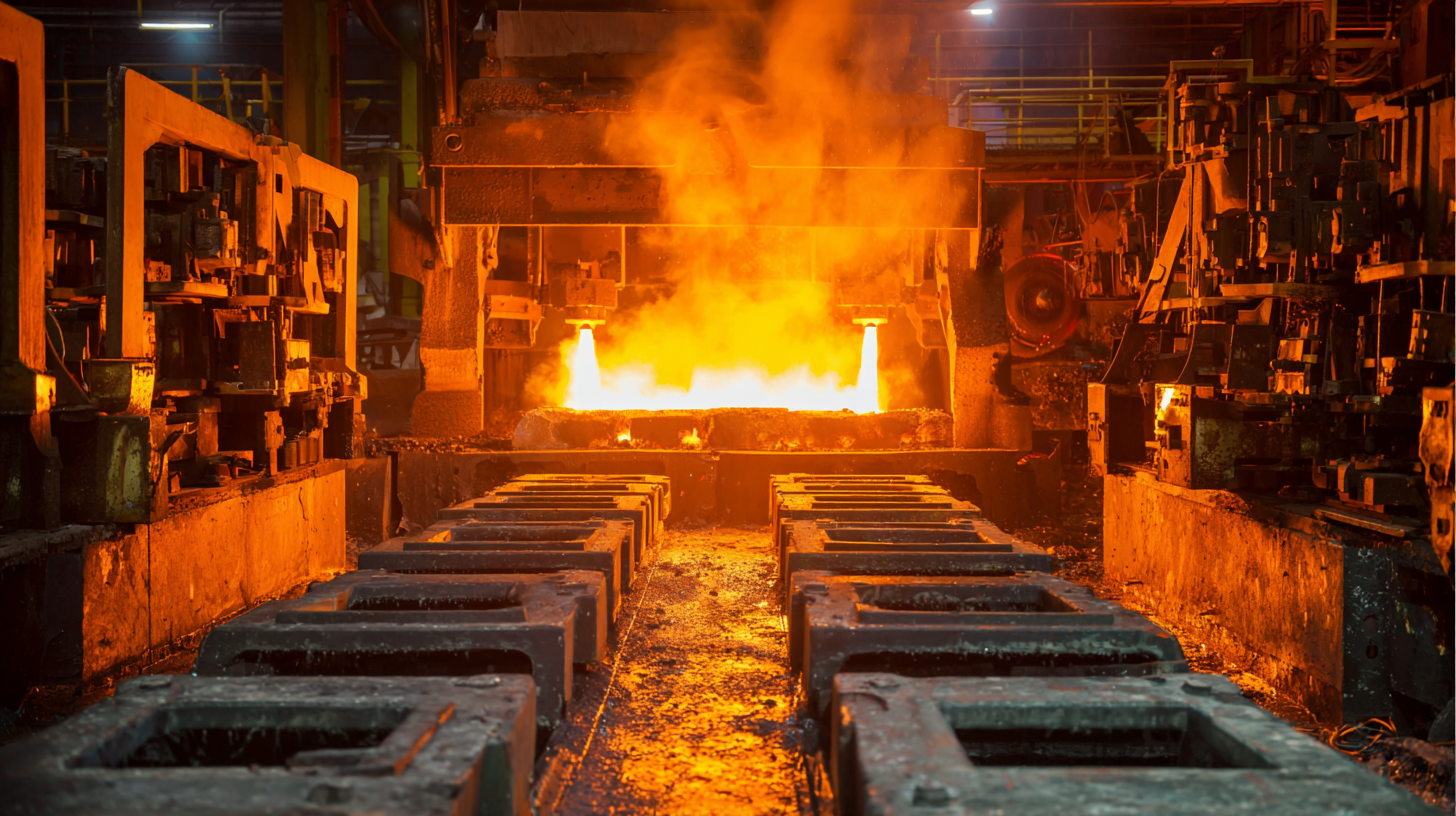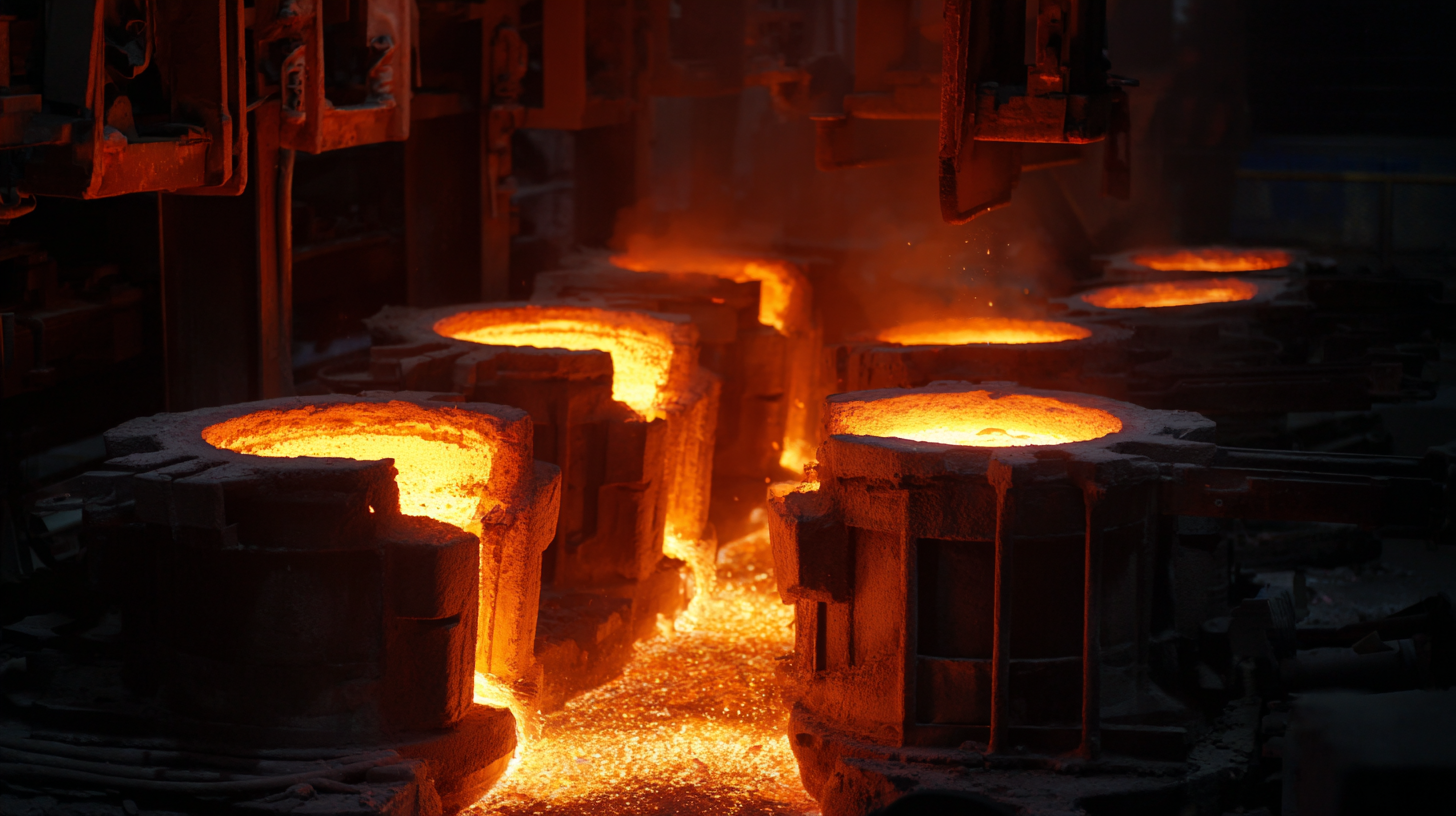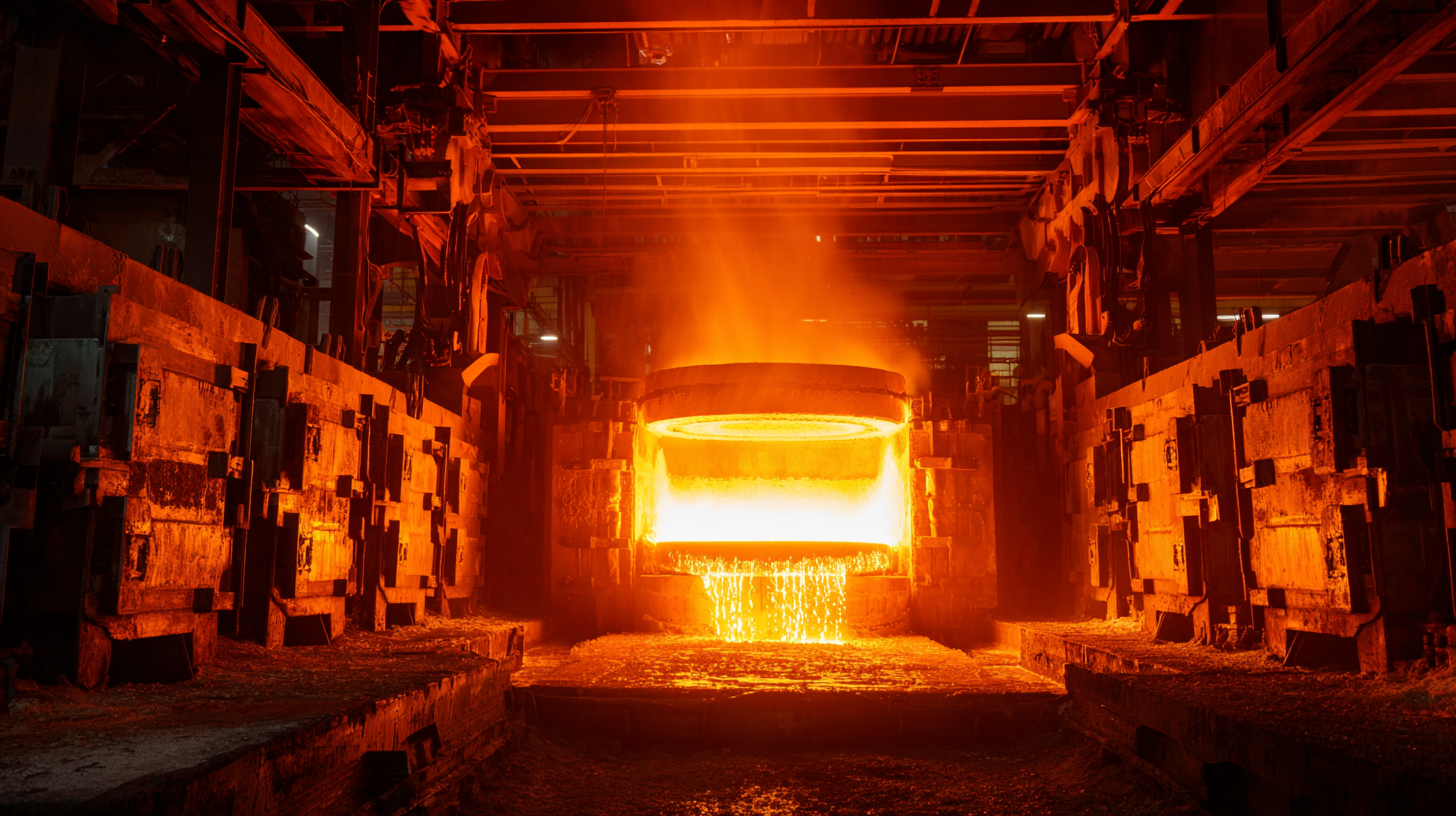
- Email Support info@futmetal.com
- Call Support +86-15726878155

When you're into metalworking—especially when you're working with brass—picking the right electric furnace for melting brass is a big deal. It really can make a difference in how efficient you are and the quality of your finished product. I recently came across a report by ResearchAndMarkets that says the global electric furnace market is expected to hit around $20 billion by 2025, and a big part of that growth is thanks to the increased demand for brass melting and other applications.

Companies like Zhejiang Rongda Energy Saving Technology Co., Ltd. know how tricky cross-border deals can be in such a fast-moving market. They’re part of Wenzhou Future Import & Export Co., Ltd., and their goal is to offer tailored services that help reduce risks and give their clients a real edge. Whether you're a seasoned pro or just starting out in brass crafting, making a smart choice when it comes to your electric furnace can really influence your success—impacting everything from operations to the final quality of your products.
When you're shopping around for an electric furnace to melt brass, there are quite a few important things you want to keep in mind. First off, the size of the furnace really matters — it needs to match how much you're planning to produce. I read in the International Journal of Metalworking that for small to medium-scale brass melting, a capacity somewhere between 10 to 25 kilograms per batch usually does the trick. Picking a furnace in this range helps you keep energy use in check while still getting your brass melted efficiently. No one wants a furnace that's too big or too small, right?
Another key point is what kind of heating element the furnace uses. You’ll find electric furnaces typically use either resistance wire or induction heating. According to the American Society of Mechanical Engineers, induction heating can melt brass faster and is more energy-efficient — sometimes cutting the melting time by up to 40%. That kind of efficiency isn’t just great for saving time; it also means lower operating costs in the long run. So if you're serious about getting more done in less time, paying attention to the type of heating system is pretty important. Basically, figuring out what capacity and heating tech work best for your needs can seriously make a difference when choosing the right electric furnace for melting brass.
When you're working with melting brass, getting the temperature just right is pretty important if you want things to turn out as expected. Brass, which is basically a mix of copper and zinc, usually melts somewhere between 900 and 940°C (1650 to 1720°F). Picking the right electric furnace that can hit and hold those temps consistently is key—nobody wants to be guessing if their metal's melting properly. I remember reading from the Brass and Copper Manufacturing Association that the quality of the melted brass really impacts its final properties, like how strong it is or how well it resists corrosion. So, keeping a close eye on temperature control isn’t just a good idea, it’s essential.

And, you know, the way the furnace heats the brass can make a big difference too. For example, induction heating is super popular because it heats quickly and evenly—plus, it helps cut down on oxidation, which is a pain. There was this study in the Journal of Material Science that said furnaces with precise temperature feedback tend to produce higher-quality brass. So, investing in a furnace with advanced temperature controls really pays off. It helps keep the melting process in that sweet spot, leading to better alloy quality and smoother operation all around.
So, when you're melting brass, picking the right crucible material is super important if you wanna get the best results. Brass, you know, that alloy mainly made of copper and zinc, needs a crucible that can handle really high temperatures—around 900 to 1000 degrees Celsius—without falling apart. From what I've read and industry stuff I’ve come across, ceramic and graphite crucibles tend to be the top picks. Ceramic ones are great because they handle thermal shocks really well, making them perfect for lower-grade brass alloys. On the other hand, graphite crucibles can handle even more extreme heat and transfer heat better, which is especially handy if you're dealing with large amounts of melting.
There's this report I saw in the International Journal of Metal Casting that pointed out how picking the right crucible can actually boost the efficiency of your melting process and help cut down on contamination so your final product’s cleaner. Graphite crucibles tend to react less with the alloy, so they last longer and help extend the lifespan of your equipment. Plus, with the right choice, you can reduce metal loss during melting—by up to 15%, actually—which means you get more yield overall. Bottom line? Your choice of crucible impacts not just the quality of your melted brass but also saves you time and money, making it a key decision for anyone serious about metalworking.
When you're picking out an electric furnace for melting brass, it's really important to pay attention to its energy efficiency ratings. Trust me, these ratings can seriously influence how much you'll end up paying in the long run, especially if you're planning to use the furnace a lot. Try to go for models that score high on energy efficiency – they’ll use less electricity but still do a good job at maintaining the right temperature for melting brass smoothly.

One tip I always recommend is to check how well the furnace is insulated. Good insulation means less heat escapes, which makes the whole process more efficient and cuts down on the time it takes to reach that perfect melting point. Also, look for features like programmable controls or an automatic shut-off—they’re great for saving energy when you're not actively using the furnace.
And don’t forget about the wattage. A higher wattage usually means the furnace heats up faster, but it can also chew through more power. So, it’s all about finding that sweet spot—something that’s powerful enough to get the job done quickly but not so much that your energy bills skyrocket. Keep these tips in mind, and you'll end up choosing an electric furnace that suits your brass melting projects perfectly while keeping energy costs in check.
When you're picking out an electric furnace for melting brass, it's super important to think about safety features first. After all, these things run at really high temps, and if you don’t have the right safety measures, things can get pretty risky. The good models usually come with handy stuff like automatic shut-off and temperature sensors that stop overheating before it becomes a problem. Plus, if the furnace has protective enclosures, it’s a big help in preventing burns or fires — whether you’re just a hobbyist or a pro.
Another key thing to keep in mind is ventilation. You want a furnace that has a good exhaust system to clear out any nasty fumes that pop up while melting. Making sure your workspace is well-ventilated isn’t just about safety — it actually helps the furnace last longer and work better. Oh, and don’t forget about easy-to-use controls and clear safety instructions — these little details make all the difference, especially if you’re new to this or even if you’ve been at it for a while. Basically, focusing on safety features means you’ll end up with a furnace that does the job in the way you need it to, and that keeps you and your workspace safe from any potential accidents.
| Feature | Importance | Recommended Specifications |
|---|---|---|
| Temperature Control | Ensures precise melting temperatures for different brass alloys. | Digital thermostats with ±1°C accuracy. |
| Safety Shut-off | Prevents overheating and potential fires. | Automatic shut-off after a set time or at critical overheating. |
| Insulation | Improves heat retention and energy efficiency. | High-grade ceramic insulation materials. |
| Electrical Safety Features | Protects the user from electrical hazards. | GFCI protection and proper grounding. |
| Airflow Management | Ensures even heating and prevents hotspots. | Adjustable vents and fans for optimized heat distribution. |
| Mobility | Allows easy repositioning in the workshop. | Built-in wheels or lightweight design. |
| User-friendly Controls | Simplifies operation, reducing user error. | Intuitive interface with clear instructions. |
When you're getting into melting brass, picking the right electric furnace can really make a big difference in getting those perfect results. There are a few brands that tend to stand out—they're pretty reliable and packed with cool, innovative features. Brands like Mrefire, Surefire, and ProSmelt have a range of electric furnaces designed specifically for melting brass. They come in different sizes and capacities, so whether you're just dabbling as a hobbyist or running a full-on workshop, there's probably something that fits your needs.
One thing I’d definitely keep an eye on is how powerful the furnace is. Models with higher wattage tend to heat up faster and reach the right melting temperatures more quickly. Also, don’t forget to check out the insulation—good insulation not only saves energy but also keeps things safer while you work.
And, of course, temperature control is a big deal. Some of the fancier electric furnaces come with digital controllers, making it super easy to dial in the exact temperature you need. This is really important with brass, because keeping the right heat prevents oxidation and helps you get a nice smooth melt. Comparing the different brands and their features will help you pick out the best fit for your project, whether you're just starting out or already experienced.
This chart compares the thermal efficiency, power consumption, and melting capacity of various electric furnaces used for melting brass. The data provides insight into which types of furnaces are most effective based on real-world performance metrics.
In the realm of aluminum processing, efficiency is paramount, and premium IGBT induction holding furnaces stand out as vital technology for manufacturers aiming to optimize their operations. The significant leap in energy efficiency and precision control offered by these furnaces has transformed the industry landscape. According to a report by Grand View Research, the global aluminum die casting market alone is expected to reach USD 31.63 billion by 2025, highlighting a growing demand for advanced melting solutions.
Our Holding Furnace Aluminium exemplifies the advancements in this sector. With its impressive capacity range of 100 kg to 1200 kg, it is engineered for flexibility, catering to both small-scale operations and large industrial processing needs. The robust construction coupled with sophisticated temperature control mechanisms ensures that the melting processes meet stringent industry standards, resulting in consistent aluminum quality. Reports from the International Aluminium Institute indicate that improved melting processes can enhance resource utilization by up to 30%, showcasing the potential gains for operators.
Moreover, the adoption of IGBT technology in induction holding furnaces not only enhances energy efficiency up to 80% but also reduces CO2 emissions significantly, aligning operations with global sustainability goals. With increasing regulations on environmental impacts, these furnaces provide a pathway to achieving both operational efficiency and compliance, making them an essential component for the future of aluminum processing.
: The optimal capacity typically ranges between 10 to 25 kg per batch.
Electric furnaces commonly use resistance wire or induction heating systems.
Induction heating systems can reduce melting time by up to 40% compared to conventional resistance systems.
Brass typically melts at a temperature range of 900 to 940 degrees Celsius (1650 to 1720 degrees Fahrenheit).
Controlling temperature significantly influences the final properties of melted brass, such as strength and corrosion resistance.
Important safety features include automatic shut-off systems, temperature control sensors, and protective enclosures.
Adequate ventilation helps disperse harmful fumes and enhances safety, contributing to the longevity and efficiency of the furnace.
Users should look for furnaces with user-friendly controls and clear safety instructions, which are essential for both novice and experienced users.
Furnaces with precise temperature feedback can yield higher-quality brass products by maintaining ideal melting conditions.
Different heating methods, like induction heating, provide rapid and uniform heating, which can minimize oxidation and accelerate melting.
When you're choosing an electric furnace for melting brass, there are a few key things to keep in mind to make sure everything runs smoothly and safely. First off, it’s super important to understand the exact temperatures needed to melt brass — this really helps you pick the right furnace and crucible materials. It’s also a smart move to look into different types of crucibles, so you find one that can handle those high temps without giving you trouble. And don’t forget, checking out energy efficiency ratings can save you some money in the long run by lowering your operating costs, while still getting the job done efficiently.
Of course, safety features are a must-have in any electric furnace for melting brass; they’re there to protect you while you work. It’s worth taking some time to compare brands, especially those known for making reliable and quality electric furnaces tailored for brass work. Here at Wenzhou Future Import & Export Co., Ltd., we’re all about helping our clients find the best options out there and making sure everything goes smoothly, especially when it comes to international transactions. We want you to have peace of mind knowing you’re getting a solid product and good support along the way.
